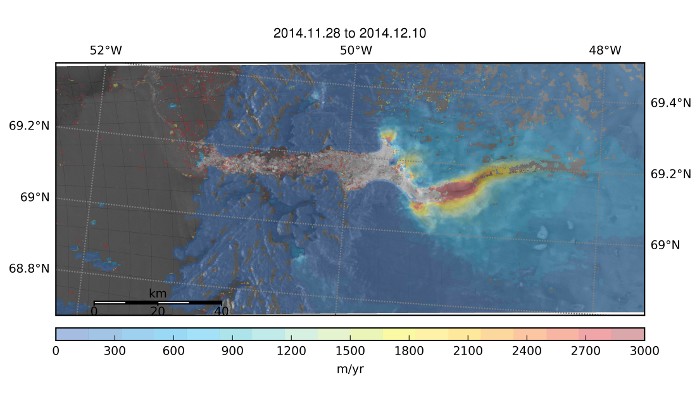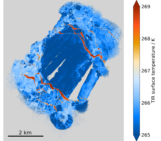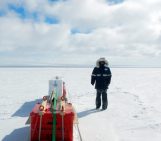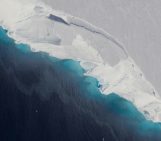
As the pace of modern life speeds up and job competition becomes even more fierce, it is good to have a focused plan of where you would like to be in the future. The European Space Agency (ESA) offers traineeships and research positions to young scientists on a regular basis. They may be a springboard into your chosen career path, but how do you go about bagging one of these valuable opportunities? Below, two Research Fellows with ESA share their experiences of successfully arriving at their dream jobs. First, however, you might want to consider how you get the all-necessary experience in remote sensing in the first place. Fortunately, we are about to tell you just that: Apply for the ESA summer schools and training courses! Especially if you have a keen interest in all things icy, you should check out the upcoming ESA Advanced Training on Remote Sensing of the Cryosphere! More about this at the end.
Two (and a half) ways to join the European Space Agency as an early career Polar scientist
For most of scientists setting out on a career means completing a masters, getting a PhD, finding a post-doc. The attitude is that the jigsaw will just fall into place; perusing the job advertisements and hoping that somewhere out there, there will be that perfect project which you are not only extremely interested in, but moreover for which you tick all the right skills boxes. This simple approach may perhaps come to fruition but you stand a much greater chance if you actually draw up a plan early on in your career. The roadmap to success is knowing your goals and understanding your own limits.
One scientist with a plan is Anna Hogg. During her Geography degree at the University of Edinburgh, Anna discovered satellite data for monitoring the cryosphere. She realised she not only liked the subject but was rather good at solving computational challenges. Deciding to explore the technical side of remote sensing, Anna went on to do a masters in Space Studies at the International Space University in Strasbourg, France. After an internship with the German Space Agency (DLR) she started her PhD at the University of Leeds which she combined with an ESA Young Graduate Trainee position during her first year at graduate school.
Route 1: The ESA Young Graduate Traineeship (YGT)
If you have just finished your masters degree or even are a PhD student who has the flexibility to take up a one-year research secondment (N.B. subject to your University’s rules), you can apply to join ESA’s Young Graduate Traineeship programme. Like all jobs, Young Graduate Traineeship are advertised, but they pop up regularly and are a great way to get an insight into the mechanisms of the space agency and, in Anna’s case, its Earth Observation programme.
Anna Maria Trofaier, also an alumna of the University of Edinburgh, sidestepped into her career. After completing her physics degree, she returned to her hometown of Vienna, where she first came across Arctic issues. She had always been interested in Space, and had worked with satellites at an ESA summer school – albeit for planetary science. At this stage however, having enrolled in a masters degree programme in Environmental Technology, she discovered satellite remote sensing for environmental monitoring. She contacted the Institute of Photogrammetry and Remote Sensing of the Vienna University of Technology, asking to join and work for them on an ESA project; a step that would shape her future for good. When she returned to the UK to do her PhD in Polar Studies at the University of Cambridge she made sure to keep the links to her Viennese colleagues and the project active. Working for ESA had always been her ambition; it was the realisation that this would have to happen through the Earth Observation programme that gave her the focus to acquire the appropriate skills for a job with ESA. And sure enough, when she was called for interview with the ESA Climate Office she felt she had arrived.
I really enjoyed my time working at ESA’s Earth Observation centre, ESRIN, just outside Rome. The Young Graduate Traineeship position I applied for had a large research component so I was able to design my own science project using data from the Earth Explorer satellite missions, like CryoSat-2. This was a great opportunity as it tied in really well with the PhD position I was awarded at the University of Leeds. There has been a lot of hard work (and fun!) along the way, but I am rewarded every day by working on an incredibly interesting topic with a network of great colleagues, (Anna Hogg).
Route 2: The ESA Internal Research Fellowship
The ESA Research Fellowship is a post-doctoral research programme that enables young scientists and engineers to undertake cutting-edge research outside of a university environment. Research Fellows usually propose their research topic within the framework of the advertised position. They are independent researchers, but they also contribute to their team’s activities. This way they get a glimpse of science management within ESA.
‘It’s been a fantastic experience! I’ve been given almost free hand to shape my own research, but it’s not just been me and my computer. I’ve thoroughly enjoyed being part of a team that coordinates research projects across Europe (the Climate Office’s main brief is the ESA Climate Change Initiative programme). I was also encouraged to get involved in the recent ESA GlobPermafrost project – working with some familiar faces but this time I’m on the ESA side of the project. We’ve been joking about how the tables have turned. It’s such a great feeling when colleagues become friends,’ (Anna Maria Trofaier).
Route 2.5: The ESA Living Planet Fellowship
There is another way to do research with ESA which is as a Living Planet Fellow (LPF). LPF’s are a traditional post-doctoral research associate (PDRA) at their own institutions, with the slight difference that part of their funding will come from ESA. Like ESA internal research fellows, LPF’s also have to propose an interesting 2 year research project, ideally with a link to other ESA science programmes. Having contributed to the ESA Climate Change Initiative (CCI) programme’s Ice Sheets project during her PhD, Anna Hogg is now a LPF at the University of Leeds. Her involvement in ESA CCI boosted her possibilities and enabled her to be successful in obtaining one of the much sought after Living Planet Fellowships.
So how will these stories help you find that perfect job (with ESA)?
- Keep checking the job openings. Certainly, the element of luck is always present – jobs need to be advertised in order for you to apply.
- Meanwhile, be outgoing and pro-active. To arrive at that ideal job you need experience. Apply for an internship or volunteer to work on a project where you will gain those all-important skills and make new contacts. And don’t underestimate the importance of networking – knowing people in your field and finding at least one person you can call a mentor will give you the support you need to successfully develop your scientific skills and securing that ideal position.
- Never give up. There might be times when you are uncertain whether you are fit to do the job – we all experience that nagging self-doubt. Just don’t give in to it!
- But do be self-aware. Of course you should always aim high and present yourself in the best light, but there is no point claiming you are good at something when in fact you have only peripherally come in contact with the subject. Understanding your limits will allow you to highlight all the things you are really good at, and if you realise you are lacking the necessary experience for the job, make sure you find a way to gain some.
Figuring out what it is you want to achieve in your professional life is half the battle. Tailoring your skills to be more in line with those goals will put you in the best position once that research or work opportunity comes along.
So what are you waiting for? Just go for it, apply and get those additional skills that will put you ahead of the game!
ESA Advanced Training on Remote Sensing of the Cryosphere
Thanks to our fantastic teaching team made up of experts from all over the world, we have put together an exciting course program covering thematic areas such as sea-ice, mountain glaciers, ice sheets and snow; and Earth Observation techniques such as altimetry, gravimetry and interferometry. The ESA course, which is co-sponsored by the UK Space Agency (UKSA) and UK Catapult centre, will take place at the Centre for Polar Observation and Modelling (CPOM) at the University of Leeds in September 2016. It already looks set to be a really interesting week, so if you have any questions about applying for a place on the course get in touch. Both Anna’s are on the organising committee and are happy to help.

Time series of Thwaites Glacier in West Antarctica composed of 29 image pairs from Sentinel-1. The top image shows the surface velocity in colours, and the bottom image is the velocity along a line starting at the grounding line and going inland. Get the data here . Credit: ESA.
(Edited by Nanna Karlsson, Sophie Berger and Emma Smith)



